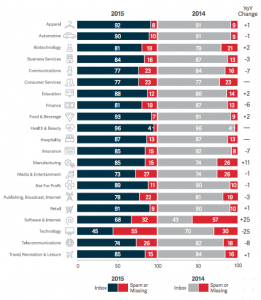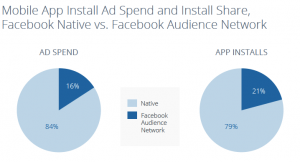— August 3, 2018

rawpixel / Pixabay
You might have read my previous post about why your website needs a blog, but do you know why your blog needs SEO?
SEO stands for Search Engine Optimisation, and it’s the art of boosting your presence across search engines so that you appear higher up in results pages when someone searches for relevant keywords. This is key in ensuring you get consistently relevant traffic to your website, with a higher likelihood of converting into new business. It’s a complex world with a lot of technical aspects to it, and in general a good SEO strategy is a long-term investment. Your blog is valuable for SEO because it’s probably the section on your site that gets updated the most and where you can add much valuable content. There are some simple steps you can follow when blogging that will allow you to get the most out of your content without the need to hire an expert or feel overwhelmed by the complexity.
During the Planning Stage
Categories & Tags: does your blog have these? Categories segment the content you share, while tags are added to articles to allow the reader to understand the topics within. It also communicates to Google what your content is about, and that it is well-structured and organised. If you haven’t been using these so far, consider adding them from now on, and go back to your previous content and categorise this too. But make sure you’re not using too many topic tags. This can appear as duplicate content, which is harmful for your SEO.
Keyword research: You’re probably already including relevant keywords throughout your content naturally. There are so many helpful tools and articles out there that will make your keyword research more efficient. Here’s an article I found particularly helpful even if you’re new to the complex world of SEO. Start with this, but then take it one step further by identifying long-tail queries that you can answer via blog content.
Long-tail Keywords: these are those longer question-type queries that people often search for. For example, ‘how to repair split ends’ or ‘what’s the best way to tame frizzy hair’ or ‘how to avoid hair falling out’ etc. Start by placing yourself in your potential customers’ shoes and consider what type of queries or problems they may have at each stage of the buying cycle, and therefore what type of information they will be searching for. In the examples above, these would all be customers that are in the very early stages of the buying cycle, they don’t yet know what they need so they’re not searching for products, but rather a solution to a problem or an answer to a question. This is where your blog can be a really helpful customer acquisition tool – if you can answer their questions and solve their problems, then they’re more likely to buy from you!
You’ll find that for long-tail keywords the search volume will be significantly lower, but don’t let that put you off. While there may be fewer queries online for your long tail keywords, I can guarantee that the traffic you do receive will be highly targeted and more relevant to you. Website visitors searching for long tail terms are more likely to read the whole post and perhaps seek more information from you, making them more likely to convert.
Trending Topics: your blog should be current and helpful. To figure out the best topics you can use a tool like Buzzsumo to identify the most shared content right now based on topics, keywords or specific domains. Some of Buzzsumo’s features are free, so you can play around with the tool and get the most out of it. Or try searching for trending hashtags on Twitter or Instagram.
Word Length: figuring out the most appropriate word length for your blog is a tricky one. Too long and people drop off, too short and you might not get your point across. So how do you find that happy medium? It’s a mixture of research, coupled with a bit of experimentation and a lot of measurement. First, take a look at the top trending pieces related to your blog and find the average word count of these. This will tell you the average length that people are responding well to. Second, make sure you keep a record of your blog articles’ word length, and measure that against stats like engagement and social shares. This will tell you what word length is actually working best FOR YOU. But the key thing here is don’t sacrifice quality in the name of hitting what you believe to be the best word count for your blog.
During the Writing & Publishing Stage
Use Your Keywords: After identifying your target keywords, you’ll want to include them throughout your post. Look to include keywords in the title, headings & subheadings, introductory text, concluding text, title tags, meta descriptions and the URL. However, make sure your text sounds natural and don’t force those keywords in just for the sake of it. Overuse of keywords (known as keyword stuffing) goes against Google’s rules, so keep it natural and don’t stress too much if you can’t fit your keywords in everywhere. At the end of the day, your blog is supposed to provide valuable content for your readers, and if it’s doing that then the engagement stats will reflect that.
Structure is Important: a good reader experience is actually a ranking factor too. So, as well as ensuring that your content is well written, doesn’t contain too many keywords, and no spelling or grammar mistakes, make sure the structure makes for a good reader experience. Use headings and subheadings, easily digestible paragraphs, well-structured sentences, and a useful introduction and conclusion. Try to add keywords within your headings and subheadings, and make sure to tag these as H1, H2, H3 etc. which tells Google how your article is structured. If you’re not sure what these are, take a look at this helpful article about headers. Use images to break up the text and allow the reader to get a visual representation of what the article is about.
Optimise your Images: Google can’t identify an image by what is displayed, but it can recognise what it is by its title. So, whenever you upload an image onto a blog, make sure to give it a title that describes what it is and uses those valuable keywords. Fill out the alt text section with a brief, keyword-rich description of the image.
Internal Linking: if you have written about a similar topic in the past, or there is another page on your website with relevant or related content, make sure you link to this page throughout the blog article using relevant anchor text. Anchor text is the clickable text in a hyperlink, and to get the most SEO value out of it the text should be relevant to the page you’re linking to, rather than generic text. This is called internal linking, and it is valuable for SEO because it tells Google that your site is well structured.
External Linking: if you mention another blogger or website throughout your blog, make sure to link to them within the text. This is not only good etiquette, but it’s a chance for you to build relationships and perhaps get a link back (known as a backlink). Quality backlinks are REALLY important for SEO.

FirmBee / Pixabay
After the Publishing Stage
Once you have hit that ‘publish’ button, your content doesn’t have to be left to its own devices. There is still plenty you can do to make sure that content performs well.
Subscribe Option: include an option for readers to subscribe to your blog and receive email notifications of new content. While email doesn’t directly impact your search engine rankings, it will have an impact on your engagement, which has an impact on your return visitor traffic, potential shareability and overall user experience, which will all in turn impact your SEO.
Share on Social Media: Publish your content across your social media channels. Make sure to use relevant hashtags on Twitter and Instagram to give it more chances of being found. If you’re not on social media yet and you’re unsure where to start, check out my article to help you figure out which social media channels you should use for your business.
Make Sharing Easy: make it easy for readers to share your content however they like by adding social share buttons. Make these clearly visible on your page and include them at the top and bottom of your article. Don’t make people hunt for social share buttons, because in most cases they simply won’t share the content if it’s too difficult to do so.
Contact for Links: if you have mentioned any bloggers or websites on your blog and linked to their site, get in touch with them and let them know you have linked to them. This will help you build strong relationships and potentially, they may be able to link to you on their site, which will go a long way to boosting your backlink profile. They may also be willing to share your blog on their social media, boosting your chances of attracting new readers.
Re-use and Recycle: old content doesn’t have to be left to die a slow death. If it’s still relevant, why not re-use it and recycle it to write a new piece of content or a follow-up article. If it’s out of date, why not write an updated version that is up to date? And make sure to use that all important internal linking I mentioned previously.
Other tips
Keep it Consistent: adding fresh content regularly will tell Search engines that your site is always up to date and give them more reasons to crawl your site regularly. This in turn will help boost your rankings and SEO, and of course if the content is of good quality it will keep your readers engaged and give them more reasons to share.
Mobile Friendly: in most cases, mobile traffic surpasses desktop traffic. So, ensuring your site is mobile friendly is not just important, it’s crucial. For searches being done on a mobile, Google displays the mobile friendly results first, so if your site doesn’t measure up it simply won’t appear.
Use Reports: whether you’ve implemented Google Analytics or any other type of analytics software, make sure you use it to help you improve on what you’re doing. Analyse where the traffic is coming from to your blog, and that’ll tell you what is working best for you. Also pay attention to which blog articles are getting the most visits, and that’ll help you determine what type of content appears to be working for you. And pay attention to how much time people are spending on your articles, this will tell you if they’re reading the entire piece or leaving after a few seconds. There’s so much valuable data from analytics, it can seem overwhelming. Get to know what each stat is telling you and decide what is most important for you to know.
Be Patient: your blog posts won’t start ranking immediately. It takes time, consistency and persistence to build up search authority. But if you’re following these steps you’ll be on your way. So just be patient!
Originally published here and republished to Business 2 Community by the author.
Digital & Social Articles on Business 2 Community
(38)






